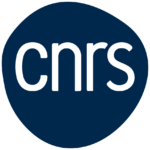Computer vision and deep learning for the Early Identification of Fall Detection
The automatic detection of postures has given rise in recent years to intense research activity and significant economic spin-offs. Kinect 3D sensors, in particular, have reinvented gaming by offering the possibility of taking into account the depth information and thus effectively discriminating typical movements. The challenges still recently organized on this theme nevertheless show the limitations of the current sensors, especially for the recognition of posture in various situations and critical events such as falls. Fall detection of people and the elderly is a public health issue. One in two seniors falls at least once. Of the 450,000 falls of elderly persons surveyed annually, 37% lead to hospitalization after a visit to the emergency department, with an average length of stay of between 12 and 14 days. Every year, more than 12,000 people die from a direct fall or the consequences of these falls. To respond to these public health issues, solutions based on worn embedded sensors, ambient sensors or even cameras have been developed in recent years. These solutions are still limited by the ergonomics, the clutter, the invasion of privacy (taking plain images), the sensitivity to acceleration, the consumption, the precision of recognition, the discrimination of the situations.
In this context, this project proposes to study a new paradigm based on the use of a software radar. Unlike conventional video sensors, the use of a radar solution can deliver rich information while respecting privacy. This project paves the way for a new sensing modality of early detection of frailty in elderly people in specialized institutions (nursing houses) or in a home environment. CARING is based on the processing of radar signatures, including but not limited to micro-Doppler and range-time signatures with a mixture of signal and image processing approaches. In this project, the radar signatures will be used to produce a reference biomechanical signature of a patient in order to monitor deviations from that reference over time to identify early signs of frailty using a combination of rule-based and artificial intelligence techniques. The development will be lab-based initially and will move towards trials with elderly patients in a nursing home or hospital environment for validation. This solution will be designed with the aim of a real-time implementation on an embedded platform (e.g. GPU, FPGA, DSP). The CARING project is supported by a consortium made up of the UCP (ETIS UMR8051), the University of Glasgow, the UESTC in Chengdu, Blueliena, the EPINOMIS (management of three nursing homes, Neuville, Herblay and Compiègne). A first laboratory prototype was produced as part of a PHC Xu Guanqgi to detect a fall with an average recognition rate of 96%, offline. The approach designed relies on handcrafted features and statistical learning (i.e., image processing coupled with a low foot print machine learning). A real-time prototype is currently under progress.
In this context, the post-doc will be expected to:
• Develop deep learning approaches.
• Conduct experiments in the lab and validate it in real environments with patients (nursing house).
• Establish the performance of the developed system.
• Promote the research (publications, conferences, seminars, patent …)
Required Skills:
• Solid knowledge in machine/deep learning.
• Signal processing and image processing.
• Radar knowledge would be a plus.
• Programming in Matlab, C and Python.
• Good command of English (Written and Spoken).
How to candidate ?
Mail to contacts with the following information
• Cover letter
• CV updated
• Supporting letters
• PhD diploma
Contacts
Pr. Olivier ROMAIN
Olivier.Romain@cyu.fr
Dr. Julien Le Kernec
Julien.LeKernec@glasgow.ac.uk


